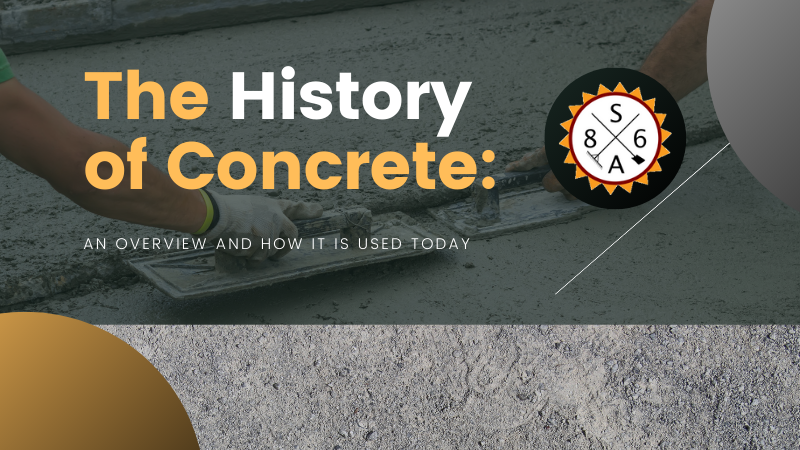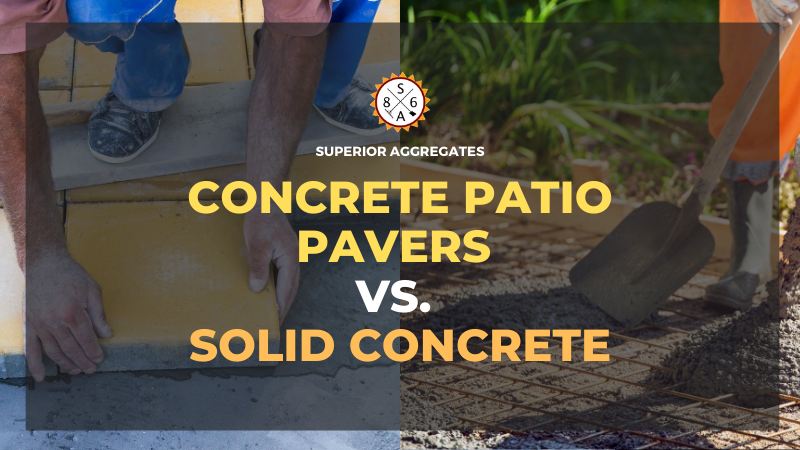
The History of Concrete: An Overview and How It Is Used Today
Today, one of the most ubiquitous materials as concrete. Many people see concrete on their driveway, and utility buildings, and in numerous other locations. Concrete is popular because it is an expensive, durable, and versatile. At the same time, many people might be wondering where concrete came from. When it comes to the history of concrete, there are a few key points to keep in mind.
Early Concrete Predecessors: Limestone
The history of concrete can be traced back to ancient times. There were numerous ancient materials that were used by early civilizations. These ancient materials formed the foundation of concrete as we know it today. For example, one of the most common materials that is used to make concrete is limestone. When sand and water were added to Limestone, it became a plaster type material that was used to help stones adhere to one another. As a result, these materials were improved. Over time, modern concrete came into existence following these procedures and limestone is an important ingredient in modern concrete.
The Evolution of Cement into Concrete: A Key Part of Concrete History
Another important element that goes into modern concrete is cement. Cement has been around for an extended period of time. Nearly 12 million years ago in the Middle East, natural deposits were formed when an oil shale and Limestone combusted spontaneously, leading to cement. Keep in mind that cement and concrete are not the same things. Concrete is a composite building material that is made out of cement along with numerous other ingredients. At the same time, cement was used thousands of years ago and still plays a key role in concrete today.
Concrete History: Its First Uses in Human Civilization
The first uses of concrete can be traced back to ancient traders in the Middle East. These traders occupied and controlled numerous oases that eventually became a small empire. Eventually, these traders discovered the advantages of using hydraulic lime. This is cement that gradually hardens underwater. Eventually, they learn how to build kilns to supply mortar that was used for the construction of rubble houses. This is where the first concrete floors were discovered. These ancient peoples understood that in order to keep the concrete functional, they needed to keep it dry. Excess water leads to voids and weaknesses in the concrete. The building practices that they discovered form the foundations of making modern concrete today.
Concrete Has a Number of Uses Today
The practices that were used by the ancient peoples formed the foundation of how modern concrete is used today. Today, despite all of our technological advances, we still rely on concrete. Concrete can be found in the floors of utility rooms, in driveways, and in numerous other places. Furthermore, it is even possible to seal concrete to prevent liquid from damaging it. In this manner, concrete is still one of the most useful materials today. Those who are looking to get the most out of their concrete should make sure that they rely on an experienced company that can guide the way. By trusting an expert concrete company that understands how concrete history influences its uses today, everyone can rest easy knowing that they are going to get the most out of their concrete investment.
Today, one of the most ubiquitous materials as concrete. Many people see concrete on their driveway, and utility buildings, and in numerous other locations. Concrete is popular because it is an expensive, durable, and versatile. At the same time, many people might be wondering where concrete came from. When it comes to the history of concrete, there are a few key points to keep in mind.
Early Concrete Predecessors: Limestone
The history of concrete can be traced back to ancient times. There were numerous ancient materials that were used by early civilizations. These ancient materials formed the foundation of concrete as we know it today. For example, one of the most common materials that is used to make concrete is limestone. When sand and water were added to Limestone, it became a plaster type material that was used to help stones adhere to one another. As a result, these materials were improved. Over time, modern concrete came into existence following these procedures and limestone is an important ingredient in modern concrete.
The Evolution of Cement into Concrete: A Key Part of Concrete History
Another important element that goes into modern concrete is cement. Cement has been around for an extended period of time. Nearly 12 million years ago in the Middle East, natural deposits were formed when an oil shale and Limestone combusted spontaneously, leading to cement. Keep in mind that cement and concrete are not the same things. Concrete is a composite building material that is made out of cement along with numerous other ingredients. At the same time, cement was used thousands of years ago and still plays a key role in concrete today.
Concrete History: Its First Uses in Human Civilization
The first uses of concrete can be traced back to ancient traders in the Middle East. These traders occupied and controlled numerous oases that eventually became a small empire. Eventually, these traders discovered the advantages of using hydraulic lime. This is cement that gradually hardens underwater. Eventually, they learn how to build kilns to supply mortar that was used for the construction of rubble houses. This is where the first concrete floors were discovered. These ancient peoples understood that in order to keep the concrete functional, they needed to keep it dry. Excess water leads to voids and weaknesses in the concrete. The building practices that they discovered form the foundations of making modern concrete today.
Concrete Has a Number of Uses Today
The practices that were used by the ancient peoples formed the foundation of how modern concrete is used today. Today, despite all of our technological advances, we still rely on concrete. Concrete can be found in the floors of utility rooms, in driveways, and in numerous other places. Furthermore, it is even possible to seal concrete to prevent liquid from damaging it. In this manner, concrete is still one of the most useful materials today. Those who are looking to get the most out of their concrete should make sure that they rely on an experienced company that can guide the way. By trusting an expert concrete company that understands how concrete history influences its uses today, everyone can rest easy knowing that they are going to get the most out of their concrete investment.




